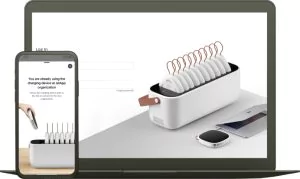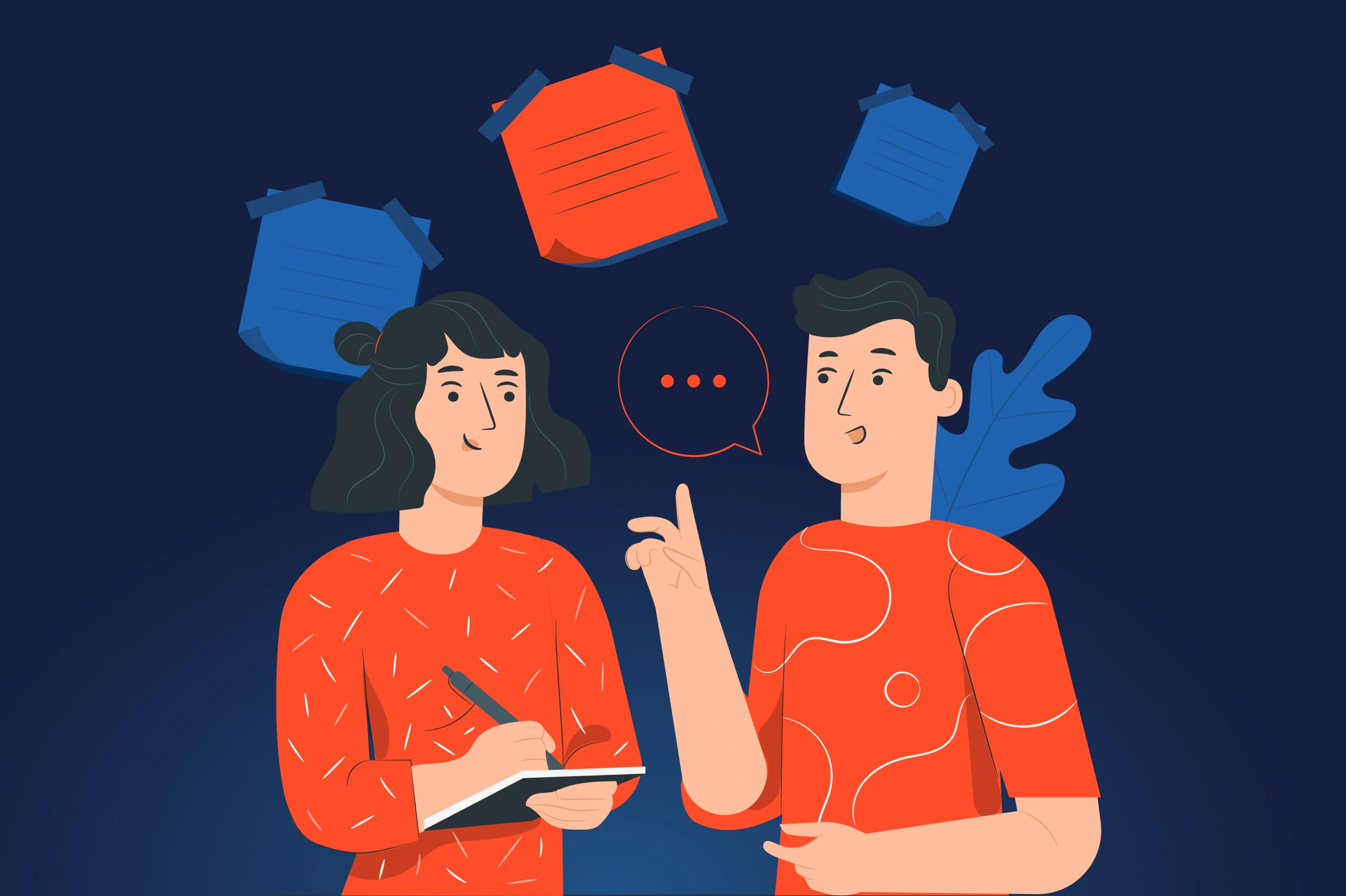Do you remember the Sorting Hat from Harry Potter that could talk and decide which school house each student belonged to? We’re not completely sure that the wizarding world exists, but what we do know is that, in real life, to make the Hat talk and even decide which house students should join, you’d rather need an Internet of Things (IoT) cloud platform than sorcery. IoT cloud platforms are unparalleled when it comes to making physical objects act intelligently, supporting their management, provisioning, and automation within an IoT infrastructure.
Businesses across different sectors have long shifted from on-site IoT architecture towards cloud solutions in order to cut down their costs. Today, market titans, like Amazon Web Services (AWS), Microsoft Azure, Google Cloud, and IBM offer their IoT cloud solutions for a wide range of industries, from healthcare to the energy sector.
Picking an IoT platform is not simply “blindly tap a finger and boom- you’re done”, it’s a very complex process that depends on your requirements and needs. But no need to worry, the JatApp team is going to share some important insights on how to choose an IoT cloud platform that would live up to your expectations.
What’s an IoT cloud platform?
An IoT platform refers to the infrastructure that allows users to interact with smart devices. It acts as a middleware between the application layers and the hardware. The IoT cloud platform organizes the data flow between IoT apps and IoT devices, offering capabilities for end-users to communicate with the IoT system.
Metaphorically speaking, an IoT system architecture can be compared to a mille-feuille cake, where a cream is an IoT cloud platform that glues all layers together. An IoT platform helps to ensure security, optimize infrastructure management, reduce challenges in the implementation of the IoT system, as well as support data analysis. Software engineers use an IoT platform to access ready-to-use functionalities, which considerably speeds up the software development for smart devices.
Given all the benefits, it’s not surprising that the IoT cloud platform market is soaring right now. However, only four giants are enjoying the biggest market share: Amazon Web Services (AWS) IoT platform, Microsoft IoT, Google Cloud IoT, and IBM IoT Suite. Let’s have a closer look at these players and their core solutions.
AWS IoT: enabling digital transformation in the workplace
AWS IoT platform has gained a massive popularity, attracting millions of active users from 190 countries. Apart from a wide range of tools, the platform provides integrations with different AWS services, benefiting from Amazon’s AI capabilities and computing power.
This IoT cloud platform is often used for creating smart building solutions. As an example, one of our clients from France, built an IoT device for smart offices using AWS IoT platform. The Cannes-based startup allows employees and students to rent charging bases and power banks to work or study where it’s convenient for them, without necessarily being attached to their desks all day long. AWS IoT helps to connect the charging base with power banks and ensures a secure interaction between connected devices and software.
The powerbank rental platform
AWS IoT Core
IoT Core is the main product of the AWS IoT suite, which enables device authentication, communication, and connection with AWS services. Device Gateway, its entry point, supports HTTP, MQTT, and WebSocket protocols. The vendor claims that the modules can handle a billion devices, with data exchange being always secure, thanks to encryption and authentication at all points of connection.
The Rules Engine processes the verified messages and sends them either to cloud AWS service or connected device. Another core feature is called Device Shadow, which preserves the desired or current state of a smart device. If the device is offline, the app can send commands to it or change its configuration. When the IoT device is online again, it aligns its final state with the updates. Amazon facilitates the development process by offering a wide range of templates and a drag-and-drop tool named IoT Things Graphs that supports creating workflows across IoT components.
Microsoft Azure IoT: modernizing the healthcare sector
Microsoft Azure is one of the fastest-growing and second-biggest IoT cloud platforms, having 14.82% of the market share. Azure IoT solutions handle each component of IoT design and development, from providing insights to decision-makers to connecting smart devices. Clients from different sectors, including healthcare, use this IoT cloud platform to bring intelligence and efficiency to their operations.
Sensoria is one of Microsoft Azure’s partners that creates smart footwear for the healthcare industry. Its product facilitates the recovery of patients suffering from diabetic foot ulcers by performing plantar pressure analysis that helps to minimize the negative impact on the area of ulceration. Thanks to the Azure IoT platform, healthcare providers can remotely monitor patients’ health and improve compliance, without worrying that their sensitive information will be misused or compromised by third parties.
Sensoria smart footwear
Azure IoT Hub
Azure IoT Hub is the core Azure IoT technology that allows connected devices to communicate with each other. With this technology, users can securely channel information both ways. The data is sent from smart devices to the cloud and routed to different services, say, for processing or storage. Meanwhile, commands are directed in the opposite way – from the backend to the connected devices.
Also, Azure IoT Hub enables secure data exchange due to device registration and authentication. At the same time, the message delivery feature and device management tools ensure reliable communication between devices.
Google Cloud IoT: bringing intelligence to our cities
The cloud-based IoT platform from the most famous search engine revolves around its key product, Cloud IoT Core. The technology is efficient enough to manage information from millions of smart devices. Benefiting from Google Maps Platform that delivers geographical data, it helps to streamline operations in a myriad of sectors, such as the smart cities industry.
Smart Parking is a product built using Google Cloud IoT. The solution includes ground sensors that rely on the combination of magnetic and infrared technologies to track a vehicle’s arrival and send the data to a gateway. This helps users understand how many vacant places are currently available on a particular street or in the parking lot.
Google Cloud IoT offers a tool for gathering, analyzing, and visualizing data from Smart Parking devices in real time to promote enhanced operational efficiency. Thanks to this vendor, the tech company was able to speed up the development process, as they no longer needed to merge operating systems with relational databases and networking.
Smart Parking solution
Google Cloud IoT Core
Google IoT Core consists of two modules: Device Manager and Protocol Bridge. Device Manager lets users configure, authenticate, and control connected devices remotely. Meanwhile, Protocol Bridge supports IoT connectivity by transmitting data to Cloud Pub/Sub service that allows combining messages from various sources into a single system.
Another valuable feature is Cloud Dataflow, which analyzes the information in real time. What’s more, another feature, Cloud Functions, enables users to instruct smart devices how to respond to certain events. Apart from that, customers use Cloud Bigtable, if they want to store large volumes of data, and BigQuery in order to build and train machine learning (ML) models.
IBM IoT suite: making over the manufacturing process
IBM merges IoT with capabilities of Watson platform, a key player in artificial intelligence (AI) and ML. It’s no wonder that the platform’s biggest strengths are predictive analytics and real-time insights. This IoT platform is the choice of many businesses in logistics and transportation, agriculture, manufacturing, to name a few.
IBM’s IoT cloud platform, Watson IoT, is implemented in L’Oreal’s manufacturing shops to increase agility, velocity, and product quality. The technology helps the personal care company to analyze data from different sensors on the manufacturing lines to make the right decisions at the right time. The IoT platform along with AI helped the company improve the safety of their products.
The manufacturing process at L’Oreal
IBM Watson IoT Platform
IBM Watson IoT Platform is created based on the highest security standards. The platform sets up and manages smart devices that rely on MQTT messaging. The technology provides an open container architecture that facilitates transmission of workloads to the clouds. It also processes the unstructured information and understands specific patterns to extract important insights. On top of that, users benefit from an analytics service, as well as a dashboard that helps to visualize the data.
Which IoT platform is the right fit?
As you may have noticed, all four market leaders have pretty much the same functionalities, even though they are packaged in a different way. To make an informed decision, you may want to consider the following two factors: price and domain.
Price
All vendors have a pay-as-you-go-model, which means that the price depends on the number of megabytes or messages a client uses and devices connected. Moreover, the price may differ by region. It’s also worth noting that Google, Amazon, and Microsoft allow end users to easily create a proof of concept, as they can take advantage of their free tier plans. It’s rather good news for skeptical customers, who don’t want to invest much in a certain vendor before getting familiar with its service.
Now, let’s focus on each vendor’s pricing separately to understand whether it’s a nice suit for your project.
-
AWS
The price depends on messages exchanged, meaning that the more messages sent, the less expensive the plan. Users enjoy a free trial for a year and 500,000 messages along with 2,250,000 minutes of connection.
-
Azure
Prices for Azure IoT cloud services are widely different and mainly depend on the features a client needs. Microsoft offers two tiers, basic and standard, the pricing of which depends on the number of messages sent daily. A free tier allows 500 registered connected devices and up to 8,000 messages daily.
-
Google Cloud
Google Cloud charges its users per second and offers committed-use discounts. What’s convenient is that clients can see how much they can save, using a cloud pricing calculator. The more users store their data, the less costly it becomes. Customers benefit from a free plan for the first 250 MB.
-
IBM
There are three major considerations that affect the total price: exchanged data, analyzed edge data, and analyzed data. Unlike aforementioned leaders, IBM Watson IoT Platform has no free trial.
Domain
Each IoT cloud platform can outperform another in a specific industry. For instance, if the client is running a large enterprise, like L’Oreal, with millions of sensors and complex IoT infrastructure, it’s a smart move to choose IBM, which prides itself on having vast experience in managing industrial equipment. Besides, picking this vendor can be reasonable for transportation, logistics, and agriculture businesses.
Meanwhile, AWS can be recommended, if the task at hand is smart home installation or implementation of a smart city project. As for Google Cloud, the vendor proved its efficiency in manufacturing, energy, and, naturally, transportation, thanks to its connection with the Google Maps Platform. Microsoft has a number of convincing use cases in such sectors as utilities, connected vehicles, and healthcare.
Now it’s time to make a decision
The choice of IoT cloud platforms can seem intimidating at the first glance, but in fact, to make up your mind without much stress, all you need to do is to compare your individual project requirements with the offerings of different market leaders. On the bright side, you may also use vendor’s free tiers in order to see whether the platform meets your needs without risking your budget.
If you need assistance at any stage of your decision-making and beyond, JatApp is here to give a helping hand. Our company has a 7-year expertise in developing software for IoT solutions and implementing IoT cloud platforms. Our IoT products, like the aforementioned power bank rental platform, have more than 40,000 active users and 24 registered companies that benefit from this technology on a daily basis.
Want to cooperate with JatApp? Leave us a note and we’ll write back to you as early as possible.








